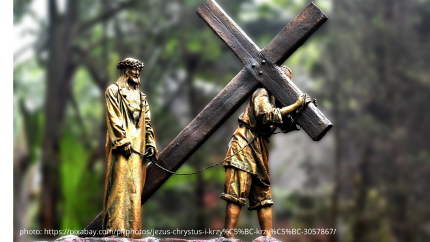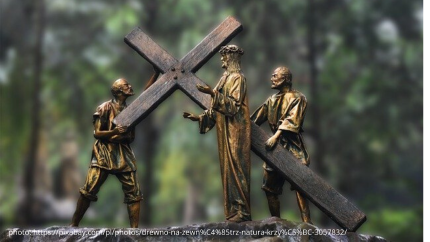Lent, 2020
On Ash Wednesday (26 Febryary this year), forty days of Lent begins in the Church. The main message of this period focuses on the spiritual preparation of Christians for a dignified experience of the Resurrection, the greatest holidays of Christianity associated with the events of the Passion and Resurrection of Christ. These events are the foundation of the Church and the faith. Because these are the most important holidays (also called paschal), they demand special preparation to be able to experience them properly. That's why this perod is called "Lent".

The symbols of Lent, which are known to everyone, are mainly a 40-day period of fasting or sprinkling with ashes. Each of the above has its symbolism:
- 40 days - This number appears very often in the Bible: the Flood lastedfor 40 days, Moses stayed for 40 days in Sinai before the Covenant for 40 years, Israel traveled to the Promised Land, the prophet Elijah travels through the desert for 40 days, Jonah announces 40 days as a period of conversion and penance for the inhabitants of Nineveh, and finally, for 40 days in the desert, Christ prepares himself to take up public activity, beginning with the proclamation: "Repent", he teaches for 40 months, resurrects after 40 hours and then for 40 days stays with students until the day of Ascension;
- Sprinkling ash on the head by Priest - Sprinkling heads with ash on Ash Wednesday, that is, at the beginning of Lent is a call to repentance and conversion. Ash is a symbol of the fact that nothinglasts forever (especially material things);
- Purple - this is a penitential color and during this period,Priests wear purple robes;
- Way of the Cross - Lent devotion of an adoration character, consisting in the symbolic reconstruction of Jesus Christ's path to death and putting him to the grave;
- "Gorzkie Żale"- is a Polish devotion containing of many hymns. The devotion is primarily a sung reflection and meditation on the Passion of Christ and the sorrows of His Blessed Mother. The devotion consists of a three-part cycle, subdivided into five unique parts. One part of the cycle is held on each Sunday in the period of Lent, including Palm Sunday, and the entire ceremony is held on Good Friday.

This period developed slowly, taking various forms. In the first centuries, Lent included only Good Friday and Holy Saturday. In the third century, the whole week was fasted, and at the beginning of the fourth century, in remembrance of the forty-day fasting of Jesus in the desert and forty years of wandering Israel after fleeing Egypt, it was extended to forty days. In the seventh century, the beginning of fasting was adopted the sixth Sunday before Easter. Because Sundays were excluded from fasting to keep 40 penitential days, they began on Wednesday; hence Ash Wednesday. From 1570 it was already a custom in the church. On this day, as a sign of repentance, heads were sprinkled with ash, remembering the true value of living with God. After the Second Vatican Council (1962-1965), the different names of Lent Sundays were unified, so that today they are called: the first, second, third, fourth, fifth of Lent, while the sixth is called Palm Sunday, which is the Sunday of the Passion. The Lent period lasts until the liturgy of Holy Thursday, which in turn begins the proper one great Easter holiday celebrated within three days, the so-called Paschal Triduum.
